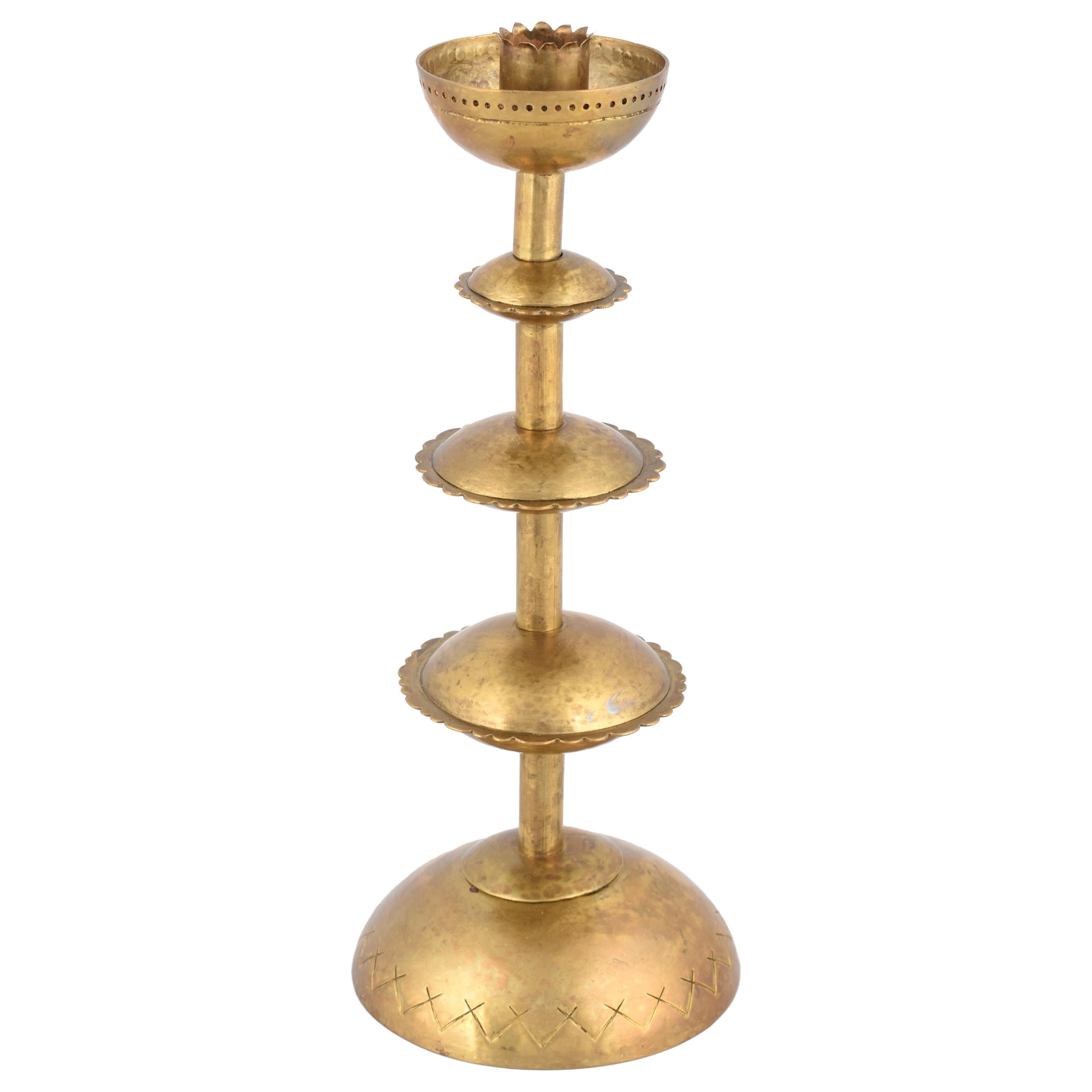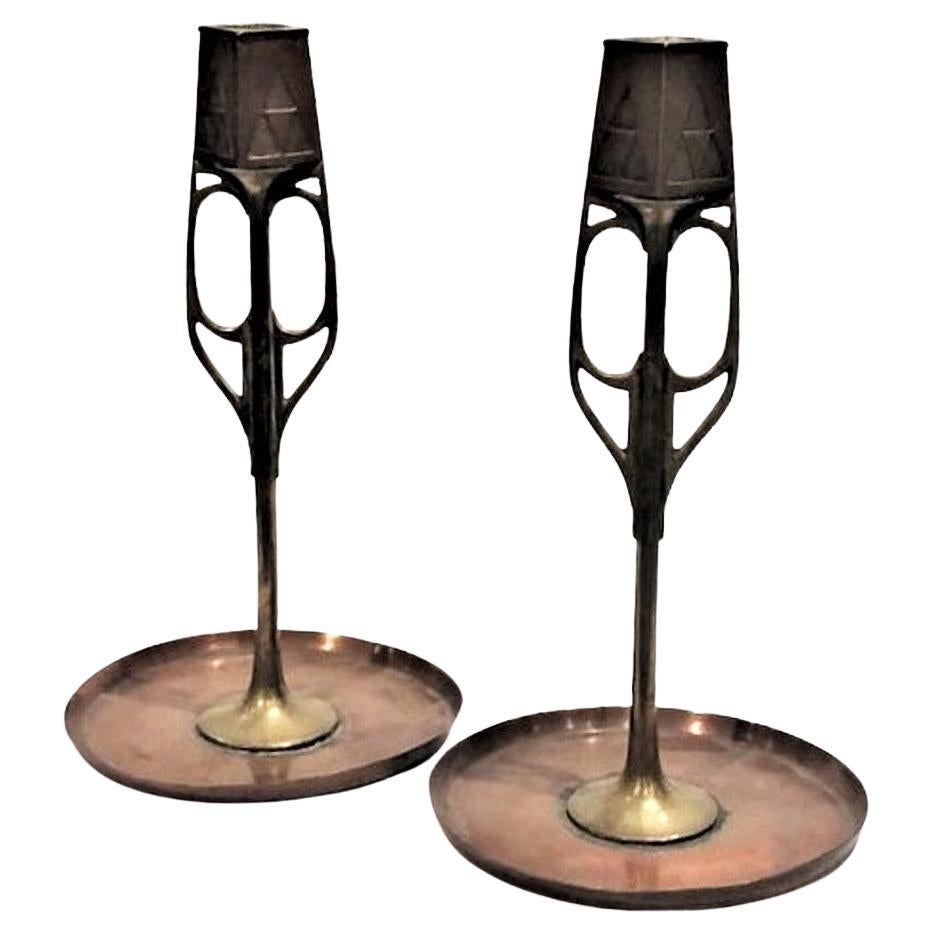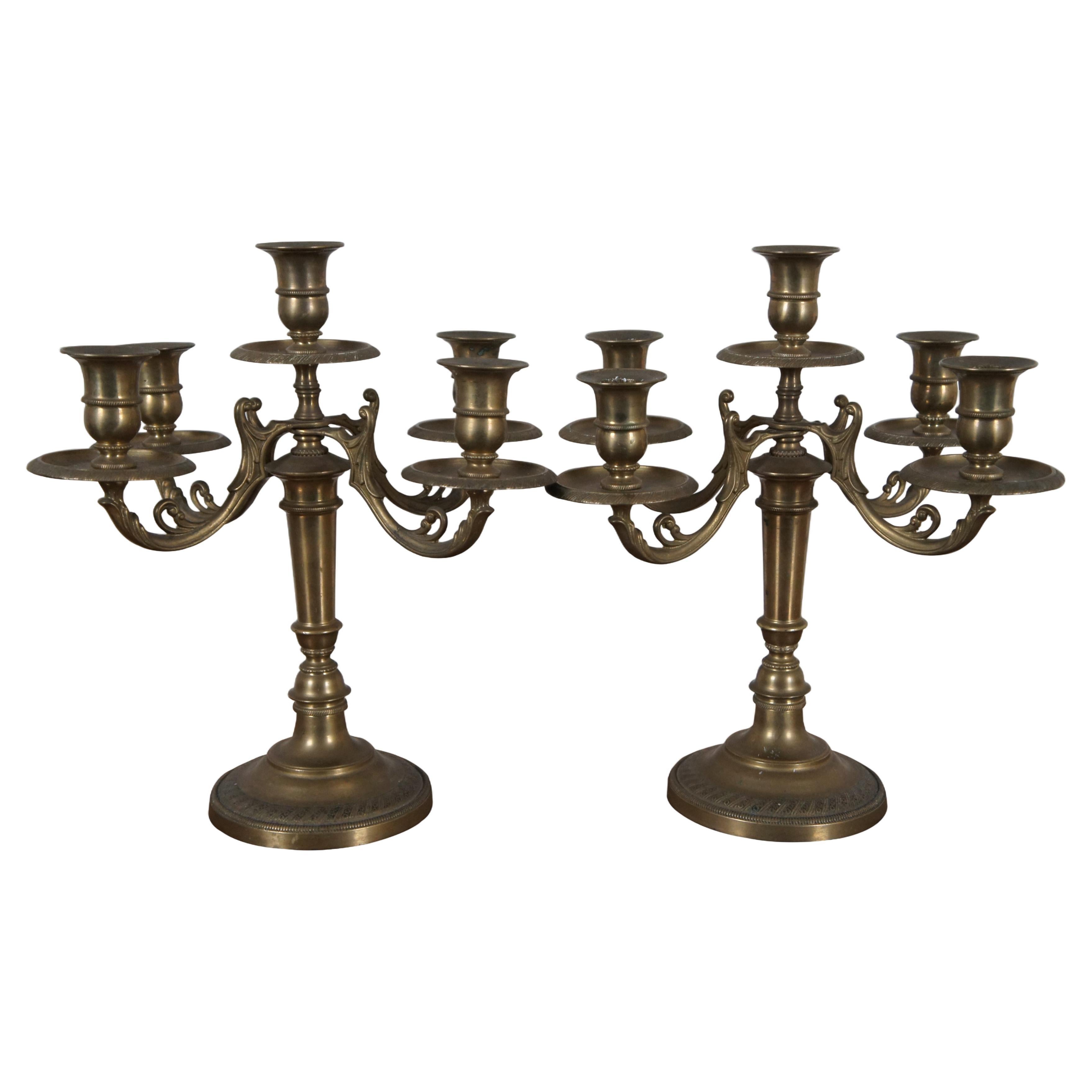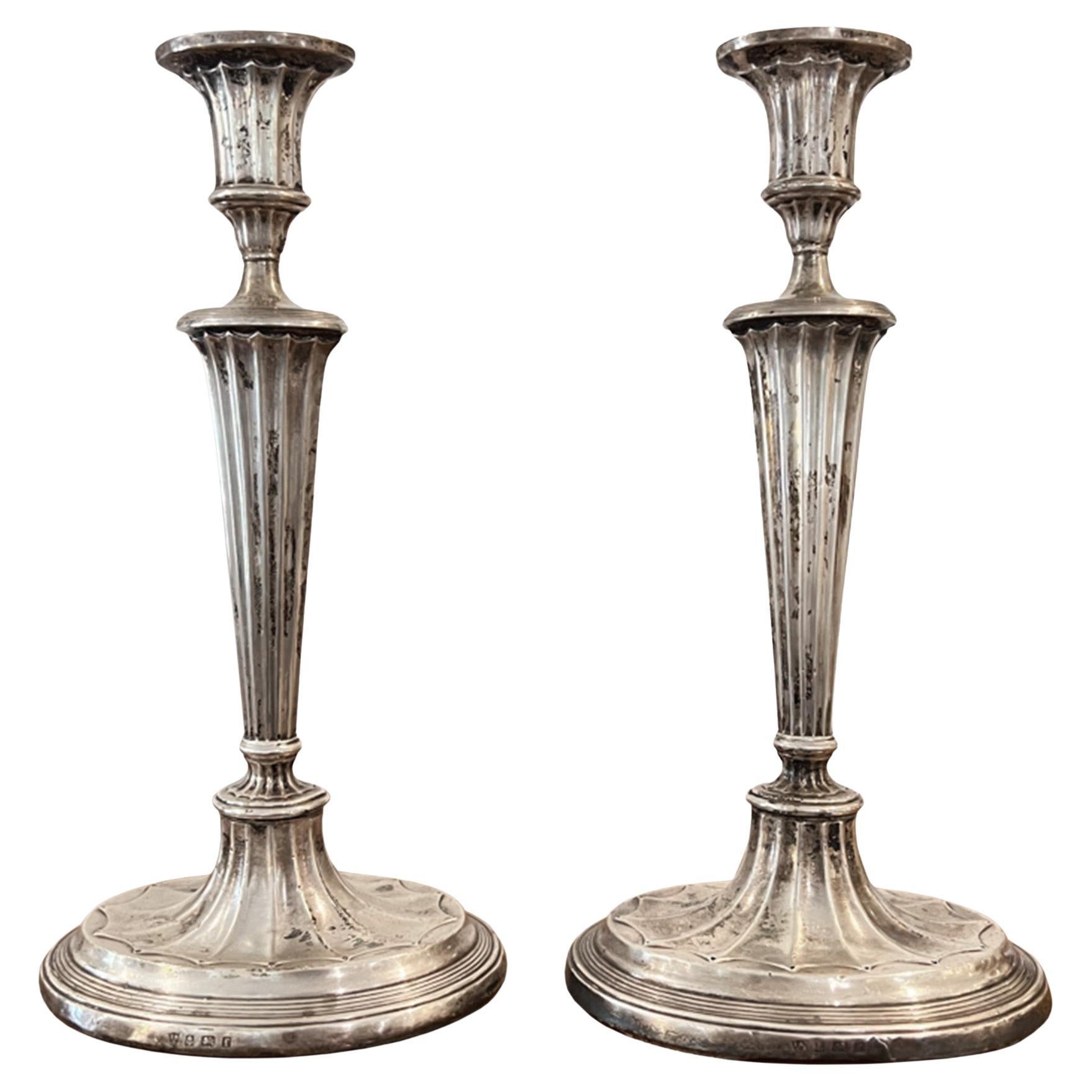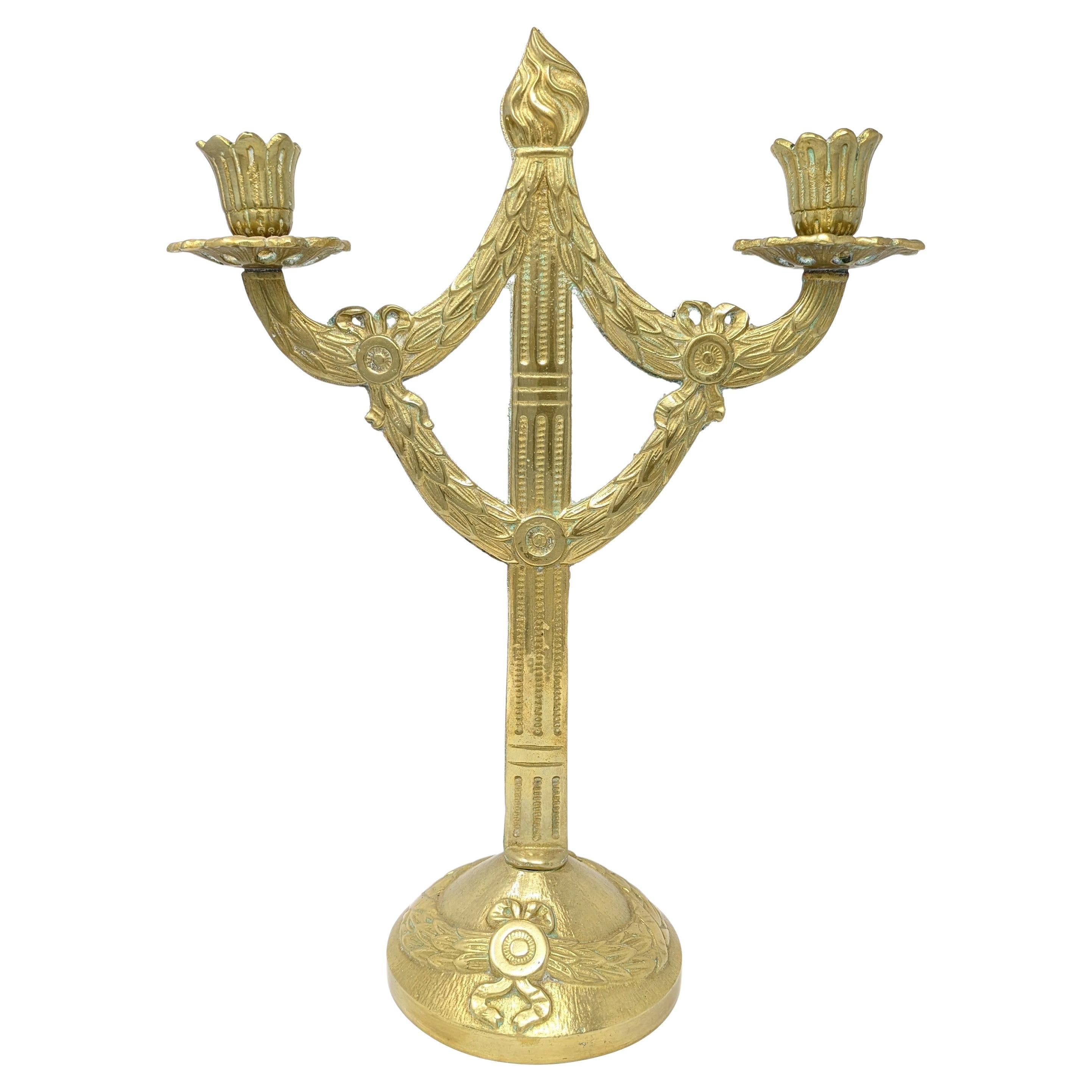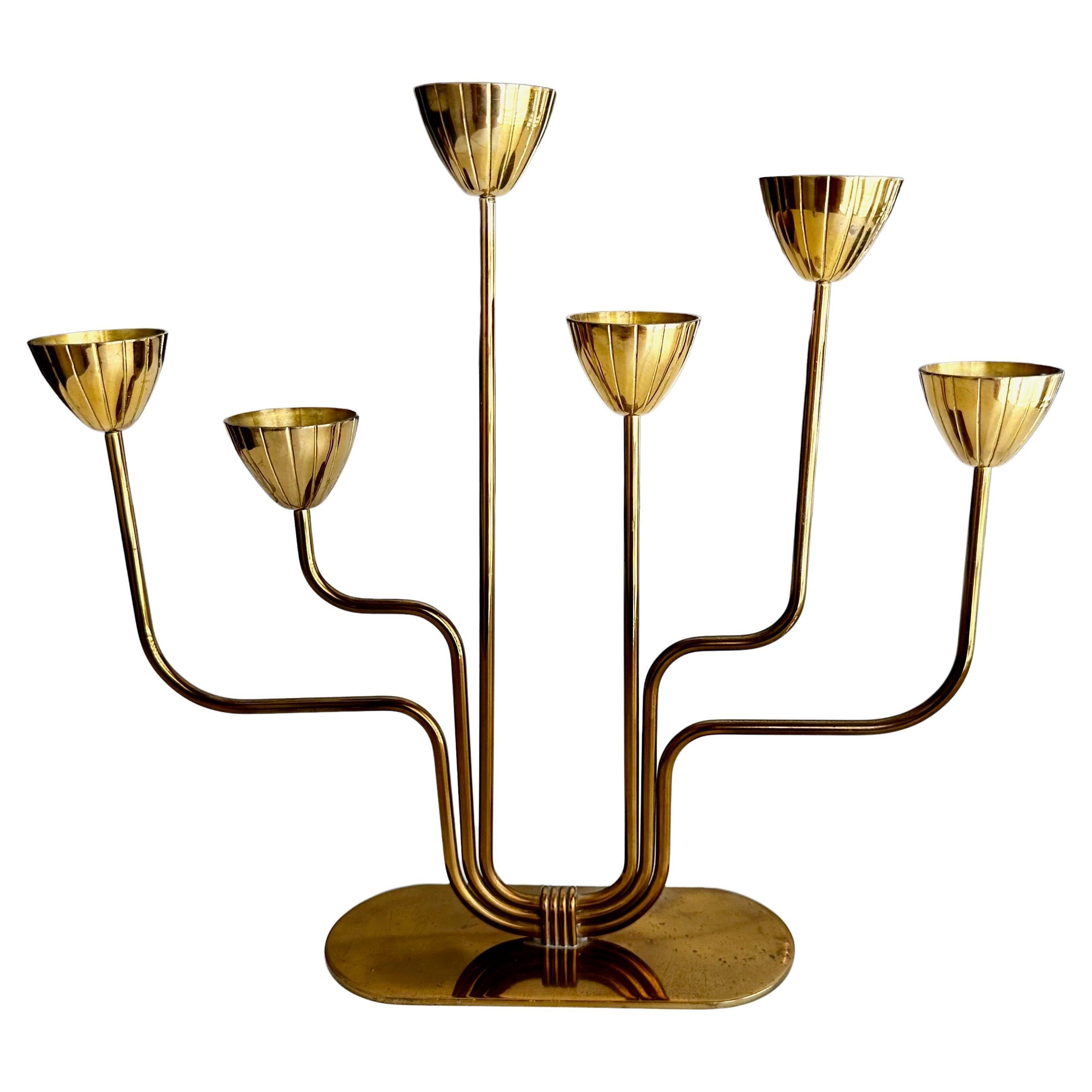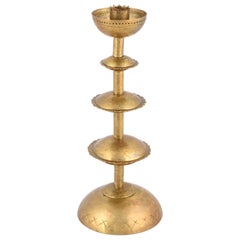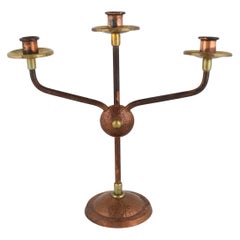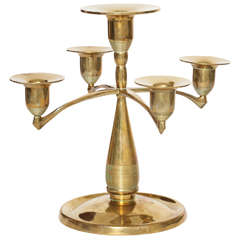
Bruno Paul Brass 5 Arm Candlestick, 1901, Germany.
View Similar Items
1 of 7
Bruno Paul Brass 5 Arm Candlestick, 1901, Germany.
About the Item
- Creator:Professor Bruno Paul (Designer)
- Dimensions:Height: 10 in (25.4 cm)Diameter: 11 in (27.94 cm)
- Style:Art Nouveau (Of the Period)
- Materials and Techniques:
- Place of Origin:
- Period:
- Date of Manufacture:1901
- Condition:
- Seller Location:New York, NY
- Reference Number:1stDibs: 130807976364
You May Also Like
- German Jugendstil Pair Bakelite Mounted Polished Brass CandlesticksLocated in Bishop's Stortford, HertfordshireA quality pair German Jugendstil bakelite and polished brass candlesticks dating from around 1910. These heavily made solid brass candle sticks...Category
Early 20th Century German Jugendstil Candlesticks
MaterialsBrass
- Art Deco Brass Candlestick, Germany, 1930sLocated in Roma, ITArt Deco candlestick is an original decorative work realized between the 1920s and the 1930s. Original brass. Made in Germany. Mint conditions. Beautiful brass object w...Category
Vintage 1930s German Art Deco Candelabras
MaterialsBrass
- Vintage Brass and Copper Candlestick, Germany, 1960sLocated in Roma, ITBrass and copper candlestick is an original artwork realized in the second third of the 20th century. Brass and copper object. Made in Germany. Good conditions: Slight signs...Category
Vintage 1960s German Candelabras
MaterialsBrass, Copper
- WMF, German Jugenstil, a Pair of Copper & Brass Candlesticks, Ca. 1910By WMF IkoraLocated in New York, NYDETAILS Marked on bottom. WMF GmbH In 1853, mill owner Daniel Straub, together with the Schweizer brothers, Louis and Friedrich, established the Straub & Schweizer metal works in Geislingen an der Steige, Germany. Only a few years later in 1862, their silver-plated tableware and serving dishes were awarded a medal of distinction at the world exhibition in London. The company, originally called Metallwarenfabrik Straub & Schweizer, merged in 1880 with Ritter & Co - a producer of high end luxury items who were ahead of their time in silver plating technique. Instead of using the method of heat and mechanical pressure to plate their wares, Ritter dipped the item into a bath of silver which together with an electric current produced pieces that were finely and evenly covered in a layer of silver. This method of plating was called ‘Galvanisation’ and allowed more intricate and complex pieces to be plated. After several years both companies still faced financial problems and in 1880 they joined with the Wurttemberg Union Bank and the company was renamed “WMF” (Württembergische Metallwarenfabrik). From its founding as one company, WMF's growth was tremendous - acquiring more factories along the way, notably including "Orivit AG" and "Orion KM". By the end of the 1900's, they were the world's largest producer and exporter of household metalware. WMF started making glass in 1883 when a glass house was built at Geisslingen near Stuttgart to produce their own glass inserts. The original 1883 glass house was destroyed during the First World War and a new, more modern facility opened in 1922. The young glass designer Karl Wiedmann perfected the technique of iridized surfaces and the resulting "MYRA"- Kristall entered production in 1926. The same year also saw the beginning of the first "IKORA" glass - reputedly discovered by accident whilst correcting a Myra glass...Category
Vintage 1910s German Jugendstil Candlesticks
MaterialsBrass, Copper
- 2 Mid 20th Century Art Nouveau Brass 5 Arm Candlesticks Candelabras 14"Located in Dayton, OHTwo mid 20th century Art Nouveau style brass candlesticks featuring five lights with a floral acanthus motif. Dimensions: 11" x 9" x 13.5" (Width x Depth x Height)Category
Mid-20th Century Art Nouveau Candelabras
MaterialsBrass
- Pair of Bruno Paul Bronze Articulating CandelabrasBy Bruno PaulLocated in Chicago, ILPair of Bruno Paul Articulating candelabras These are unmarked. Uncertain if they are German by Bruno Paul or if possibly by the Anderson Foundry executed in the early 20th century....Category
Early 20th Century Jugendstil Candelabras
MaterialsBrass
$3,950 / set

